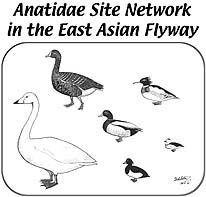
Introduction to the Network Sites
Mai Po and Inner Deep Bay
Hong Kong Special Administrative Region, People's Republic of China
[ in Japanese ] [ Back ]
[ What's New ] |
[ Site Network ] |
[ Action Plan ] |
[ Links ] |
[ Atlas ] |
[ Sitemap ] |
[ Japanese pages ] |
[ Network Sites ] |
[ Activities ] |
[ Introduction ] |
[ Contacts ] |
|
|
Introduction to the Network Sites Mai Po and Inner Deep BayHong Kong Special Administrative Region, People's Republic of China [ in Japanese ] [ Back ] |
Year | January Count |
Average | 20,243 |
1997 | 33,463 |
1996 | 13,234 |
1995 | 18,438 |
1994 | 20,836 |
1993 | 15,248 |
The Mai Po and Inner Deep Bay area (some 1,500 hectares, 22°29'-22°31'N, 113°59'-114°03'E), Hong Kong Special Administrative Region, People's Republic of China is a natural shallow estuarine area with an extensive inter-tidal mudflat backed by dwarf mangroves, shrimp ponds and fish ponds. The area has been listed as a Wetland of International Importance under the Ramsar Convention since 1995, and has joined to Shorebird Site Network since 1996.
Deep Bay regularly supports over 20,000 migratory Anatidae populations (Tab.1). Twenty-six species have been recorded. The more common species include the Common Shelduck (Tadorna tadorna), Eurasian Wegion (Anas penelope), Common Teal (Anas crecca), Northern Pintail (Anas acuta) and Northern Shoveler (Anas clypeata). The area regularly supports more than 1% of the East Asian population of Common Shelduck (Tab.2). Three globally threatened species of Baikal Teal (Anas formosa), Baer's Pochard (Aythya baeri) and Ferruginous Duck (Aythya nyroca) have been recorded.
English name | Scientific name | Highest Count | Date of highest count | 1% level |
Shelduck | Tadorna tadorna | 2,972 | Jan 97 | 1,300 |
Eurasian Wigeon | Anas penelope | 3,392 | Feb 96 | 7,500 |
Falcated Teal | A. falcata | 126 | Jan 93 | 350 |
Gadwall | A. strepera | 35 | Feb 95 | 7,500 |
Green-winged Teal | A. crecca | 5,322 | Feb 96 | 8,000 |
Mallard | A. platyhynchos | 54 | Jan 96 | 15,000 |
Spotbill subspp. | A. poecilorhyncha | 390 | Feb 95 | |
Northern Pintail | A. acuta | 6,642 | Jan 94 | 7,500 |
Garganey | A. querquedula | 100 | Mar 96 | 10,000 |
Northern Shoveler | A. clypeata | 8,082 | Jan 95 | 7,500 |
Conservation measures implemented in the site include designating the core part as a restricted area, regular wardening, statutory landuse plans to control development inside and in adjacent areas, and declaring Inner Deep Bay as Water Quality Control Zone with water quality objectives defined. There is a conservation strategy and a management plan for the area.
The management authority of the Site is:
Agriculture, Fisheries and Conservation Department,
Cheung Sha Wan Government Offices,
303 Cheung Sha Wan Road, Kowloon,
Hong Kong
URL: http://www.afcd.gov.hk
* | Shorebird Site Network in the East Asian - Australasian Flyway |
Further information of the Site can be found on the internet at:
Looking into Mai Po Ramsar Site
in the Conservation Section (in English and in Chinese) of Agriculture, Fisheries and Conservation Department.
Annotated Ramsar List of Wetlands of International Importance in People's Republic of China, Ramsar Bureau.
Ramsar database sheet for Mai Po and Inner Deep Bay, A Directory of Wetlands of International Importance, Wetlands International.
[ Top ] [ in Japanese ] [ Back ]
[ Network Sites ] |
[ Activities ] |
[ Introduction ] |
[ Contacts ] |
[ What's New ] |
[ Site Network ] |
[ Action Plan ] |
[ Links ] |
[ Atlas ] |
[ Sitemap ] |
[ Japanese pages ] |